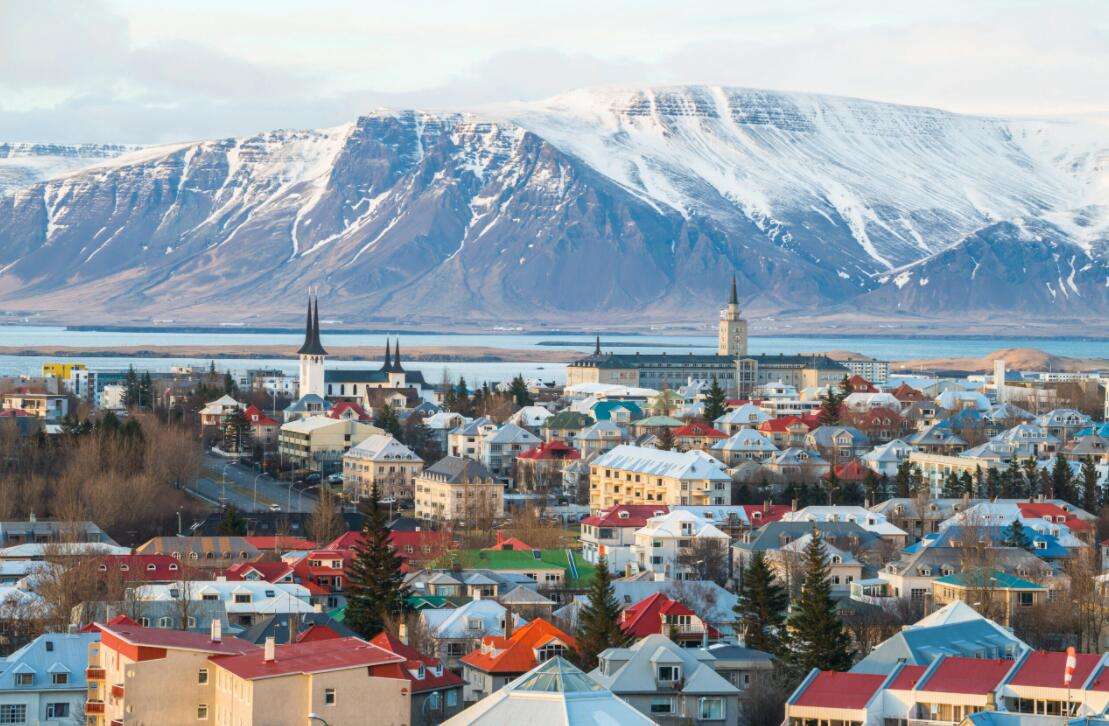After the outbreak of World War II in 1939, Germany launched a "blitzkrieg", which once occupied Poland, Denmark, Norway, Luxembourg, the Netherlands, Belgium and other countries in a very short period of time.
What few people know is that in World War II, Britain once occupied a country in a day. The country is called Iceland.
One
Located at the confluence of the northern, Atlantic and Arctic Oceans of Europe, Iceland is an island nation. Iceland covers an area of about 103,000 square kilometers, which is comparable to China's Zhejiang Province; Iceland has a population of more than 300,000, and the population is not even as large as some townships in southern China. The country is isolated overseas, and people live a life without controversy.

However, Iceland's geographical location on the only road from the Atlantic Ocean to the Arctic Ocean is very important, in an old Chinese saying, it is "a place where soldiers must fight". During World War II, Iceland thus became a focal point for both warring parties.
It is said that on April 9, 1940, Germany invaded Denmark. Prior to this, Iceland was a vassal state of Denmark. On April 10, the day after Denmark was invaded by Germany, the Icelandic Parliament immediately declared that it had withdrawn from the Danish king the power of Iceland's foreign affairs and other affairs and remained neutral in World War II. According to Iceland's idea, that is, neither side of the war can afford to offend, so I simply stand on the sidelines and watch the hilarity.
It's just wishful thinking in Iceland. How could the warring parties make Iceland look hilarious?
Britain knew very well that sooner or later Germany would move against Iceland and control the Atlantic Ocean's main route to the Arctic Ocean. In order to dispel the Idea of Germany, it was necessary to "strike first" and take Iceland for itself.
As a result, the British developed a military operation code-named "Harpoon" with the goal of capturing Iceland.
Two
Guess how many troops the British sent to carry out Operation Harpoon?
The answer is 746 Royal Marines. They came from the 2nd Battalion of the Royal Marine and a small special forces unit. British Army Colonel Robert Stenguez was appointed Commander-in-Chief of the Expeditionary Force. His expeditionary force, mostly made up of recruit eggs, was not adequately trained, lacked heavy weapons, could not even come up with a decent map of Iceland, and few in the army spoke icelandic language.
On the evening of 6 May, the British expeditionary force set out from the British mainland and traveled north by train to Glenock, Scotland. Here, they were transferred to two cruisers, the Bevek and the Glasgow. On 8 May, the cruisers HMS Bewik and HMS Glasgow, escorted by the destroyers HMS Intrepid and HMS Luck, headed for Iceland with 756 British Marines.
During the voyage, a recruit committed suicide because of too much psychological pressure. The situation seems to be a little bad before the teacher dies before he dies?
Three
At 1:47 a.m. on 10 May, when the British fleet arrived near Iceland, a seaplane was released to reconnoiter the defenses in Reykjavik, the Icelandic capital. After a few laps in the seaplane, it woke up Icelandic Prime Minister Hermann Jonathan. Jonathan quickly summoned the head of the National Police Force, Aina Anadards, to discuss countermeasures.
Iceland has no army, only a 70-strong national police force. This was clearly unable to resist the British offensive. Jonathan had no choice but to call the British consulate to protest, and the reply they received was: "Please cooperate with our work." ”
Just as Jonathan was on the phone, the British Expeditionary Force had landed. When Icelanders awoke from their slumber, british soldiers with guns on the streets of Reykjavik were already quietly appearing.
At this time, the British consul came out to "lead the way". He told the head of the Icelandic National Police force that they should maintain order. The head of the Icelandic National Police Force "obediently" obeyed. In this way, the British Expeditionary Force occupied the Icelandic capital without bloodshed.
Four
However, Iceland is a large area, with more than 100,000 square kilometers. The 745 Royal Marines simply could not effectively control the whole of Iceland. On 17 May, the British sent a second force (about 4,000 men in one brigade) to land in Iceland for the second time. Icelandic Prime Minister Jonathan continues to verbally "protest" and there is nothing he can do. British Prime Minister Winston Churchill reassured him, saying that when the war was over, the British army would definitely withdraw from Iceland.
At this point, the British Expeditionary Force's "Operation Harpoon" was declared victorious. If you count, the only casualty of the British Expeditionary Force in Operation Harpoon was the recruit who committed suicide.
In World War II, Iceland was in the big picture and finally agreed to cooperate with Britain. The British continued to increase their troops in Iceland to 25,000 men. In July 1941, Iceland signed a mutual defense agreement with the United States, which attracted 40,000 U.S. troops to be stationed in Iceland.
After the end of World War II, both British and American troops withdrew from Iceland. However, under the new agreement to defend Iceland, the United States set up a military base in Kiflavík until the end of September 2006, when all U.S. troops were unilaterally withdrawn.